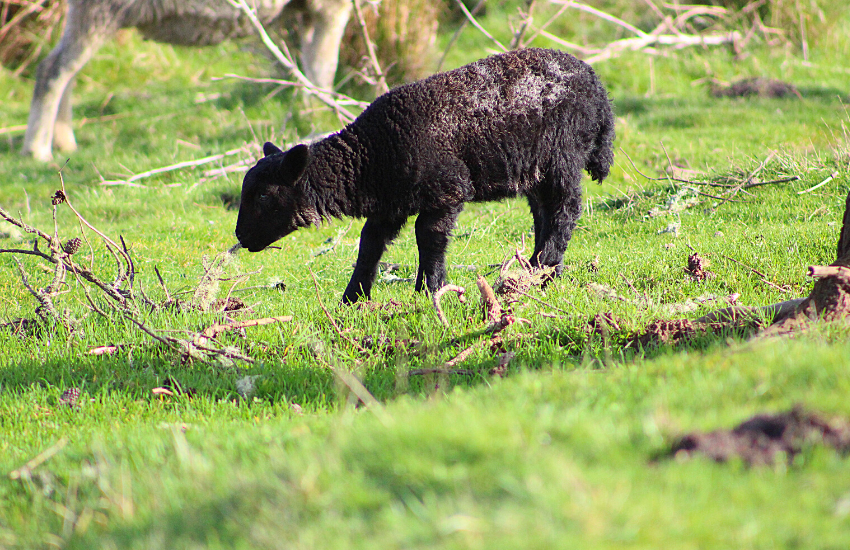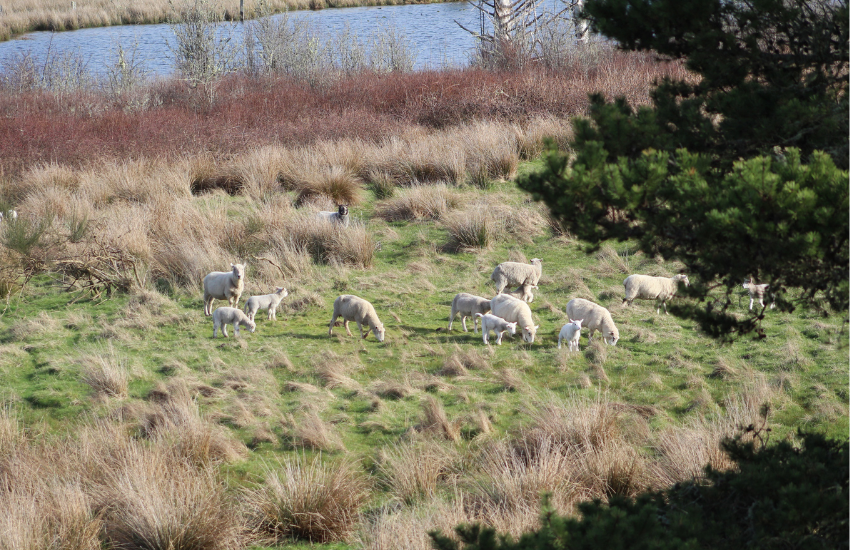
A little lamb grazes at Reed Ranch Habitat Reserve.
There are signs of early spring at North Coast Land Conservancy’s Reed Ranch Habitat Reserve, and they have sweet faces and woolly bodies.
These precious lambs are the latest addition to the flock of sheep who regularly graze at Reed Ranch, NCLC’s largest preserve in the Clatsop Plains. The sheep, who come from an adjacent ranch owned and operated by Bill Reed, benefit from being able to ramble across the slopes and spacious stretches of grass encompassed in this approximately 118-acre property. However, they provide a unique contribution in return, passively participating in NCLC’s effort to return Reed Ranch to the coastal prairie habitat that characterized these dunes for millennia.
“They’re helping us manage Scotch broom,” NCLC Stewardship Director Melissa Reich says.
When NCLC acquired the reserve in 2008, it was virtually covered in a sea of mature Scotch broom as a result of decades of neglect. Eradicating the invasive plant through a combination of mowing and manual removal requires dedication, but it is gradually opening up the prairie once again. Now, it’s mostly about maintenance and deterring new growth.

Sheep have been part of NCLC’s Scotch broom-removal strategy at Reed Ranch for several years.
The sheep assist by nibbling at the Scotch broom. Bill, whose family has been farming and ranching in the Clatsop Plains for more than a century, collaborates with NCLC, moving the sheep across West Lake and onto the preserve nearly every morning and then back out at the end of the day. NCLC has another great partner in Randy Curs, a volunteer who lives nearby and mows in the winter and early spring prior to nesting and wildflower season to help manage the Scotch broom.
“It is such a big property that he is mowing on a regular basis up until about early April,” Melissa says, adding Randy has been volunteering his time at Reed Ranch for many years.
Scotch broom removal is only a small part of NCLC’s restoration plan for the land. It has been coupled with the replanting of native plant species to reestablish a reserve that provides nesting sites for migratory birds—such as western meadowlark and osprey—and nutrition for grazing deer and elk. Another effort currently underway, Melissa says, is to introduce more Sitka spruce trees, as the shade can help deter the growth of new Scotch broom.
If successful, this strategy holds particular potential for the two easternmost dune ridges, which are too steep to mow.
“If we can transform this really steep slope into a forest, we can get rid of Scotch broom,” Melissa says.
Additionally, Reed Ranch possesses a high priority for conservation, as it can potentially provide habitat to the threatened Oregon silverspot butterfly.

A lamb trails an ewe across the prairie at Reed Ranch.
Comments